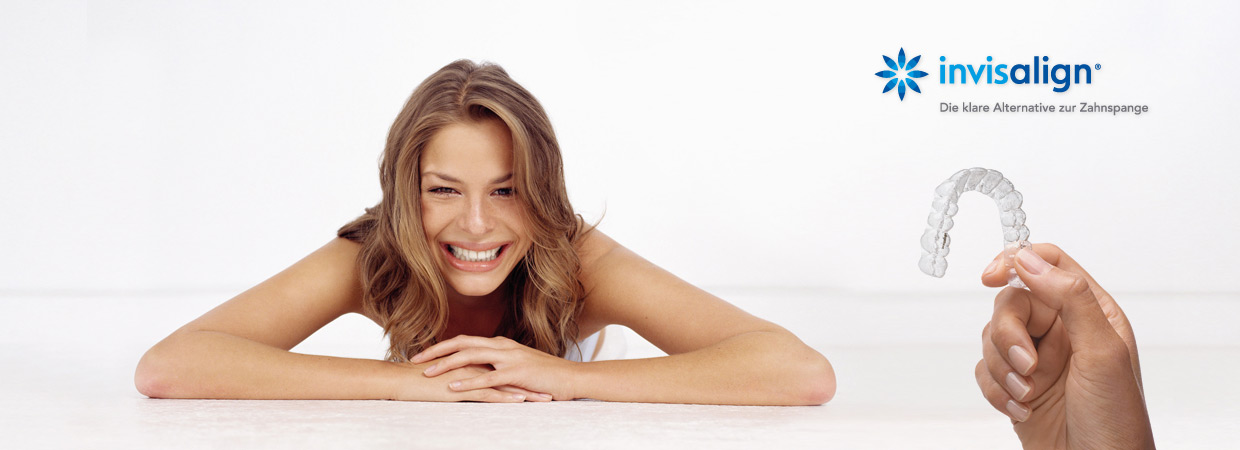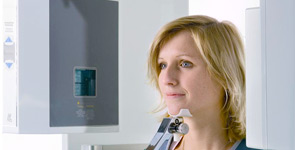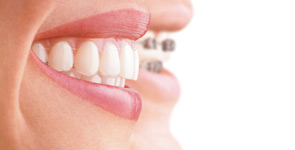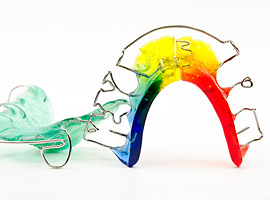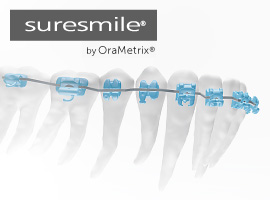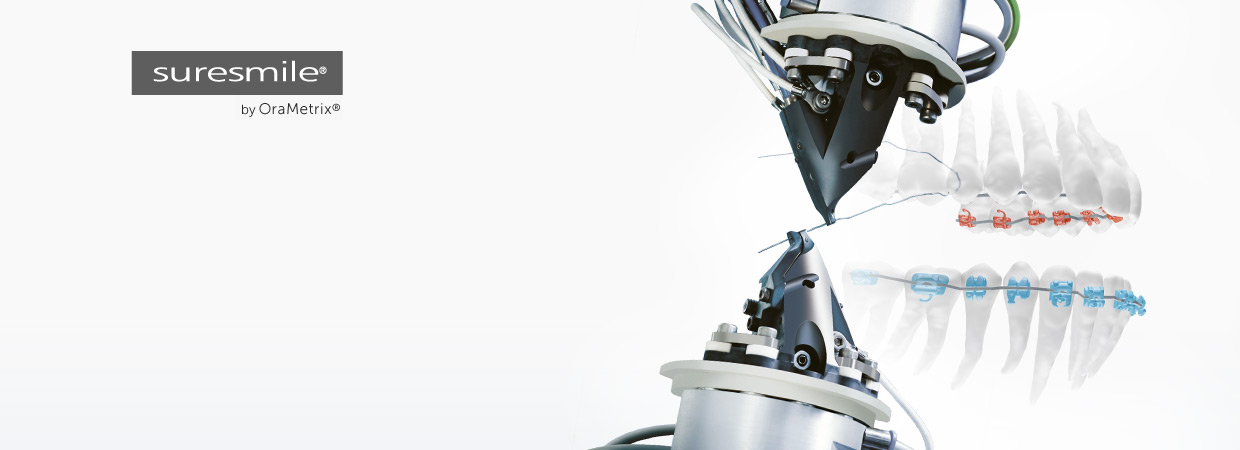
Combined orthodontic-surgical treatment
After reaching full development, if there is a malalignment of the jaw (dysgnathia) that cannot be rectified by orthodontics, a surgical correction may be possible.
We work together with several experienced oral and maxillofacial surgeons for this purpose.
The treatment often has three phases:
- Orthodontic Pre-Treatment with Decompensation
When there is a malalignment of the jaw, the teeth often develop in such a way as to compensate partially for the skeletal flaw. This compensation must first be reversed. Usually this is done with a fixed appliance. During decompensation, there is often a temporary worsening of the patient’s appearance, but luckily this only lasts for a short time! - Surgical Intervention
After pre-treatment comes the surgical repositioning of the jaw. It is possible to modify the upper or lower jaw, or both, depending on the malocclusion. With modern surgical techniques, several different types of incisions are now possible. - Orthodontic Fine Tuning
Once proper alignment of the jaws has been achieved, the occlusion is adjusted and stabilised using orthodontics.
Teamwork – pre-prosthetic orthodontics
Early tooth loss often causes teeth to shift, and instances of aplasia may prevent optimal prosthetic placement.
In such cases, the primary dentist and the patient may desire an improvement of the dental alignment before prosthetic placement. This often results in more aesthetic and better functioning prosthetics.
Indications
- Straightening crooked teeth and opening gaps are the most common indications
- Reducing crowding in the front teeth
- Attaining functional occlusion before prosthetic placement
- Modifying an occlusion that is strained by movement of the lower jaw
- Therapy of pains in the joints, chewing muscles, head, back, and cervical spine
- Reduction or elimination of tinnitus
We Are Here for You
Ask Dr. Drost. He will gladly advise you.
Regular oral hygiene and
prophylaxis are important!
Oral hygiene during the orthodontic process is something very important and dear to us. Here are our tips for oral hygiene while wearing removable or fixed orthodontic appliances.
During the orthodontic treatment, you should continue to see your primary dentist for general dental care (including caries diagnostics!). However, we will monitor your oral health when you visit our practice as well. If treatment is required, your parents will be informed and you will be referred to your dentist if necessary.
Tips for Removable Appliances

- Clean the appliance with a toothbrush and toothpaste daily
- Twice a week, soak it in a solution with special cleansing tablets
Prophylaxis
The prophylaxis is not carried out in our practice,
but rather with your primary dentist.
- Coordinating treatment with your dentist
- In some cases, we can remove bands/brackets
on request for cleanings or fillings
Oral Hygiene Tips for Fixed Braces
- Brush your teeth at least 3 times a day, taking extra care in the morning and at night
- Angle the toothbrush around the brackets
- Use floss and interdental brushes
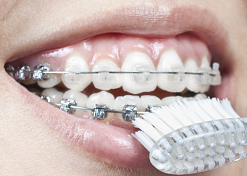
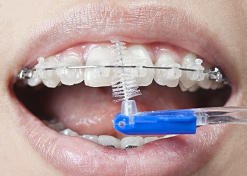
Incognito - The invisible treatment
Incognito offers an alternative way to get beautiful teeth without having to wear clearly visible fixed braces, which are considered undesirable for many aesthetic reasons.
These braces are worn on the inside, totally "incognito". A discreet solution for those with careers in the public eye.
Comfortable to Wear
The astonishingly slim design of the brackets attached to the inside of your teeth makes them comfortable to wear. Customised to fit each tooth, they are also slim enough that they don't affect your speech.
Custom Made for You
The brackets and arches are fabricated in a laboratory just for your teeth, and the treatment is simple and fast. The brackets themselves are made of a metal alloy high in gold content, which is particularly biocompatible and thus highly recommended for those with allergies.
Treatment
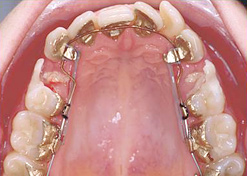
Before
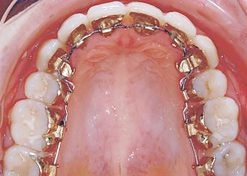
After
Course of Treatment with Incognito
1. It starts with a first impression
To start treatment with the Incognito system, impressions of the teeth must first be taken. The plaster models made from the impressions are used to create an individualised therapeutic set-up. The correct position of the jaws is simulated using an articulator and a bite registration.
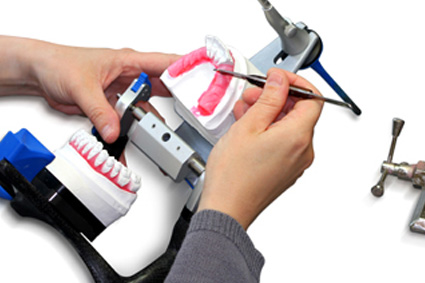
2. Construction of the patient-specific brackets
Special CAD/CAM software allows for the construction of patient-specific brackets. The fabrication process begins with the customised bases for the lingual surfaces of the teeth. The bases fit perfectly because of the high-precision data from the scan.
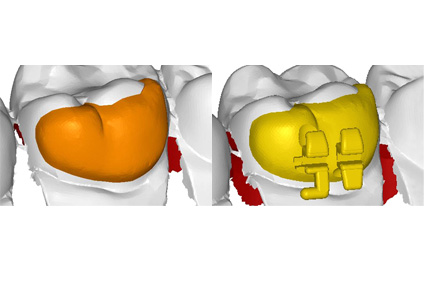
3. Positioning the bracket bodies
After designing the bracket bases, the software is used to position the matching bracket bodies loaded from the digital archive. The vertical position, torque, and angulation of each bracket are predetermined. That way, the special requirements of each patient may be taken into account when making the brackets. Shown here is a complete bracket set with accompanying arch.
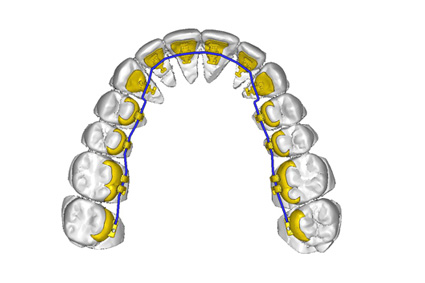
4. Making the tray
The pretreated gold brackets are arranged and checked in all 3 dimensions so they can be precisely attached to the malocclusion model. Then a tray is made directly on the model to ensure that the brackets are transferred exactly from the model to the patient's teeth. Gold brackets on the original malocclusion model.
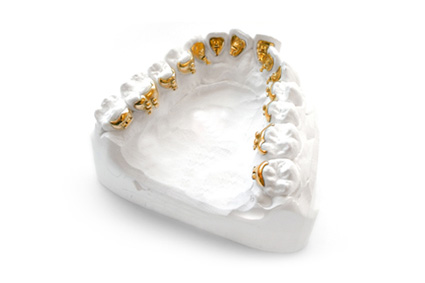
5. Casting the customised brackets
Brackets after casting. First, rapid prototyping machines build wax models of the customised brackets. These are then embedded in a muffle, and the wax is removed by heating. The mould cavities thus created are cast with a dental alloy high in gold content. The customised brackets are then smoothed and polished using machines to ensure a high degree of patient comfort.
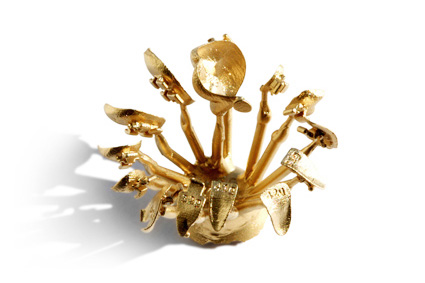
6. Arch fabrication
The arch geometry is precisely calculated by the CAD/CAM program and then bent into shape by a robot. Each of the patient’s arches has the exact same geometry, aiming towards the final position as planned in the set-up.
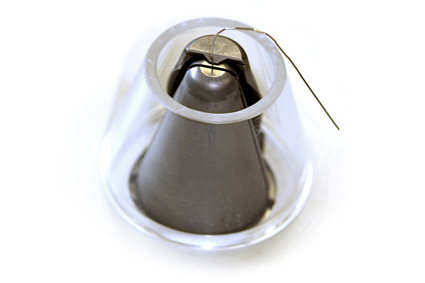
7. The result: Incognito braces
Incognito braces. The result of this process is the Incognito Lingual Bracket System, a 100% customised and high-precision system achieving optimal treatment results and simultaneously offering the highest patient comfort.
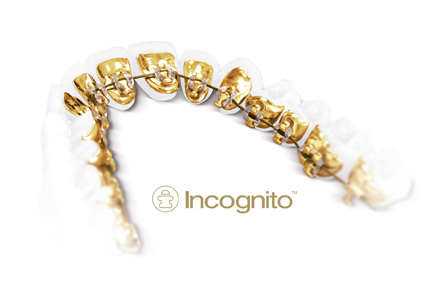
Advantages
- Invisible from the outside
- Brackets attached to the inside of the teeth
- High-precision fit
- Short treatment time
- Custom made for you using dental impressions
- Optimal treatment results
- Suitable for all ages

Bracket systems for excellent performance and predictable treatment results
We can continue treatment with (almost!) all systems – so you don’t necessarily have to get brackets rebonded when switching to our practice.
That includes modern, self-ligating bracket systems as well as inconspicuous ceramic brackets. suresmile is another effective treatment available here.
Visible Brackets – Labial
Metal Brackets: Smart Clip® by 3M
- Economical option
- Mini-brackets for better aesthetics
- Can be combined with ceramic brackets on the front teeth
Ceramic Brackets: Smart Clip® by 3M
Discreet dental alignment with ceramic brackets.
These inconspicuous, translucent brackets blend in with the patient’s teeth by letting their natural colour show through. Also suitable for patients with a nickel allergy.
Self-Ligating Brackets
The self-ligating bracket system requires less force and is thus more comfortable for the patient.
Invisible Lingual Brackets
arious systems for lingual technique: Incognito, STb by Ormco, and also STb Light Social 6 (from canine to canine on the top and bottom – so just the front teeth).
- The brackets are attached to the inside of the teeth
- Invisible dental correction
- Comfortable
- Suitable for all types of malalignment
- May impair speech slightly in the beginning
Incognito
The fully customised brackets of the lncognito™ Appliance System are internationally renowned as the slimmest brackets on the market.
Read more about Incognito invisible braces









